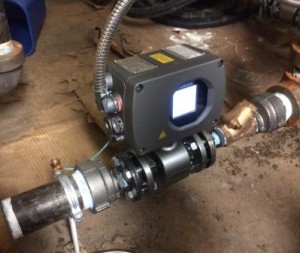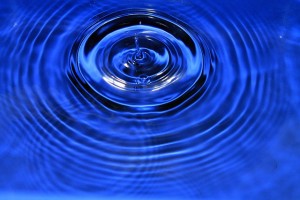In considering the energy provided and consumed through a Steam distribution system as a billable commodity, accurate measurement is critical to provide justifiable cost statements. As discussed in the previous article, practice has been to measure the steam provided to a given point-of-use location and bill on the total energy contained in the steam even […]
Achieving the Highest Energy Usage Accuracy Through Condensate Measurement
Typical steam distribution systems rely on steam flow measurements as a way to measure and bill energy usage at a given point-of-use (building or structure, Heat exchanger, fan coil unit, etc.). Does measuring and billing this way make a major assumption that may not be true?
New Milestone for CMAG in Pumped and Gravity Condensate Applications
Central Station Steam is proud to announce the sale of our 1000th CMAG meter for condensate service. Originally designed for pumped condensate service with no flow profiling or piping straight run required, the CMAG has now been customer proven to be an excellent choice for gravity service as well! Innovative flow tube and electronic design […]
Why Condensate Conductivity Is Never Too Low For CMAG Magnetic Flow Meters
Due to the nature of the magnetic flow meter measurement (which uses Faraday’s law to measure voltage/velocity of a liquid as it moves through a magnetic field generated by the coils embedded in the flow tube) there is a requirement for the liquid to maintain a certain level of conductivity in order to generate a […]
Flowmeter Accuracy Vs. Repeatability
Although some believe that good repeatability is a measure of accuracy, this is a misconception. Repeatability is in no way an accuracy guarantee. Therefore, when considering a measurement device, if you see only a repeatability statement and no accuracy statement, be cautious and consider your application. Repeatability is the ability of a system or device […]
Flow Meters And LEED: Your Green Building Certification
LEED certifications are obtained through a points-based evaluation in several building categories. One of those categories is water efficiency, which is of course, where flow meters come in.
The Benefits of Sub-Metering On College Campuses
College campuses can benefit from sub-metering from a business, engineering, and management perspective— all of which are vital to an institution’s sustainability. The full weight of these benefits can vary between small and larger schools. Small colleges will benefit from sub-metering simply as a way to reduce energy use and associated costs. The metered data […]
Piping Requirements For Flow Meter Installation
A distorted fluid velocity profile is one of the most common reasons for inaccurate flow meter readings. Swirls or other distortions in the flow are caused by the tees, elbows and valves that make piping systems functional. But, to keep your flow meter functional as well, there are some requirements regarding the fluid’s flow profile, […]
Metering A Heating System: Condensate Vs. Steam Mesurement
To calculate energy usage and loads for a heating system, the question is: Which side of the heating system should we measure to provide the most accurate and encompassing measurement results? The simple answer would be the steam side since this is the heating medium providing the energy to the point of use location. However, […]
Ultrasonic Vs. Magnetic Flow Meters
While selecting the proper flow meter technology for your system is critical, your ability to rely on the meter’s readings will depend more heavily on the application. Every meter technology will have its advantages and disadvantages, but it’s the nuances of your system and what is flowing through it that should garner the most attention. […]

